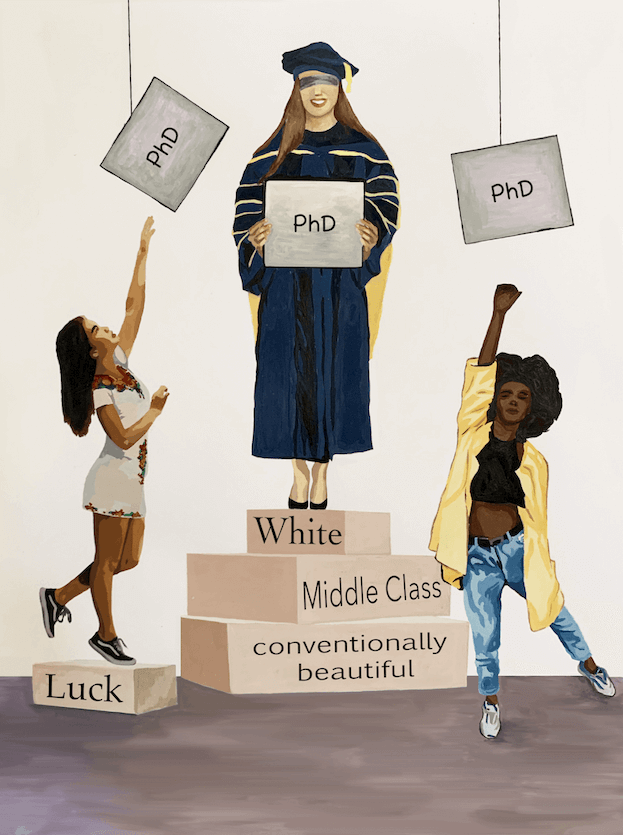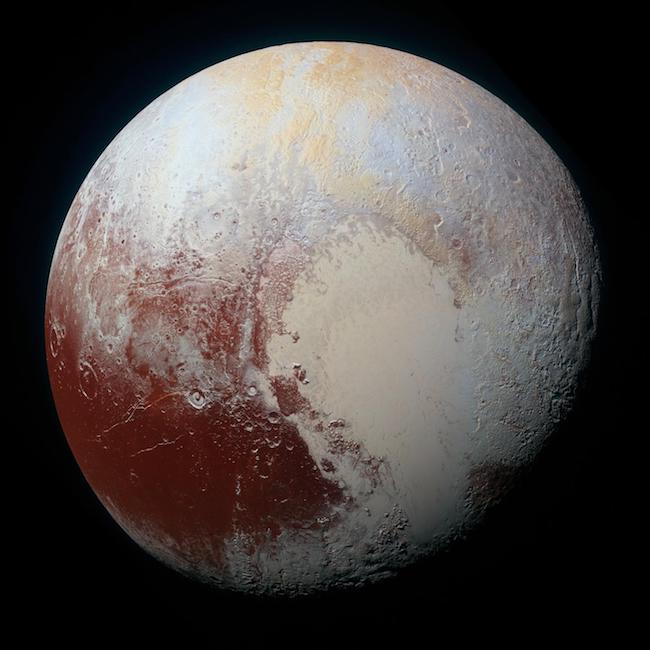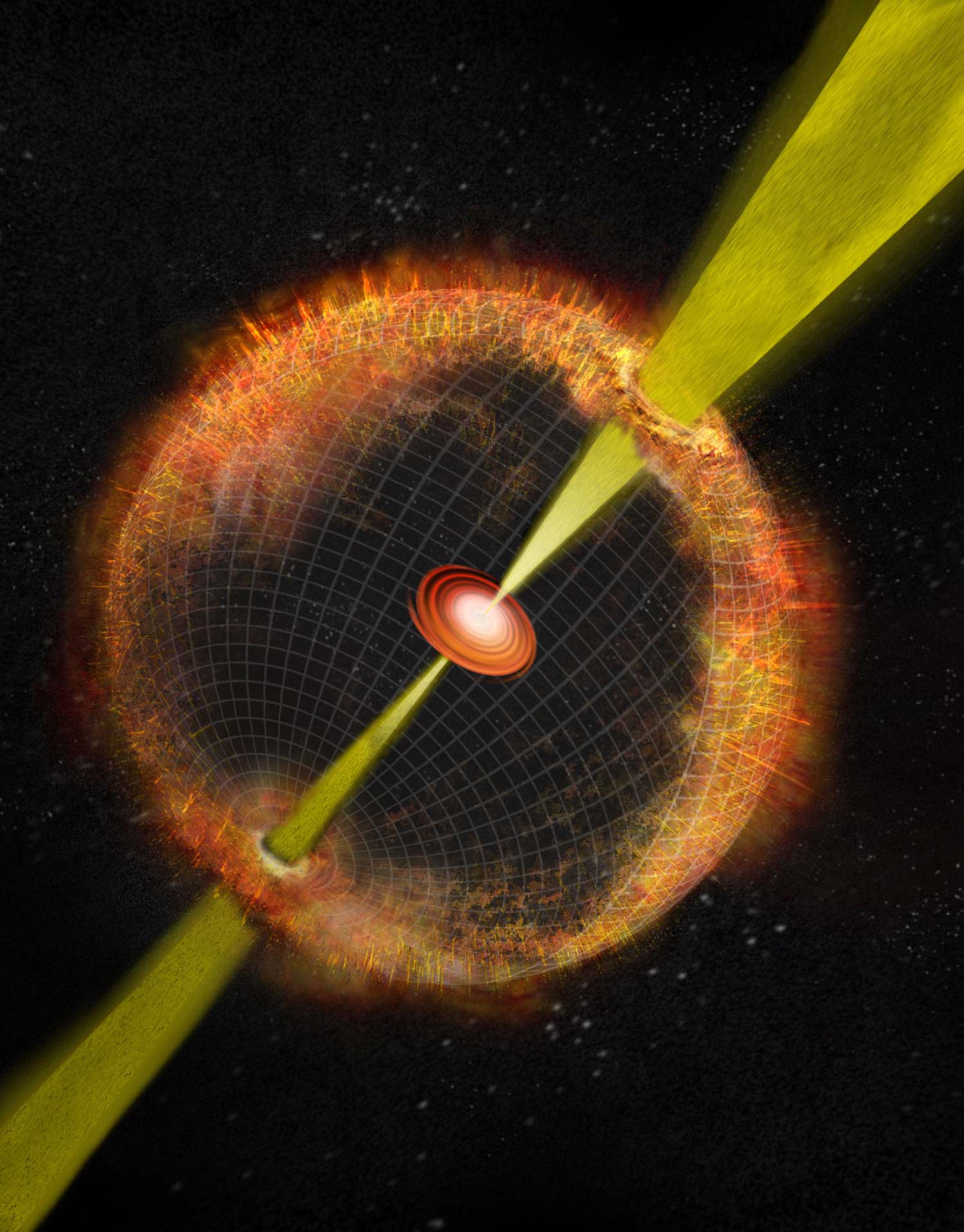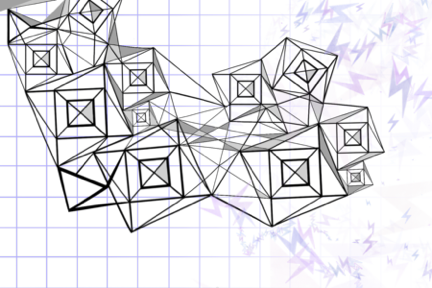
Illustration by Jennah Colborn for Caltech Letters
Some of the greatest technological advancements in history have come from exploiting the laws of physics. With further mastery of each set of laws came a new chapter in the history of mankind. Newton’s laws unlocked the secrets of motion. We have used his discoveries to build bridges and skyscrapers, and send rockets to the moon. The laws of thermodynamics brought about the engines that make our cars run, the refrigerators that preserve our food, and the machinery of the industrial revolution. The laws of electricity and magnetism taught us how to power our cities, to build the electronics in our cellphones and laptops, and to communicate with people halfway across the globe. But there is a set of laws in physics that we have not yet learned to fully exploit, and these are the laws of quantum mechanics. These laws describe very small things like atoms and molecules, and very cold things, hundreds of degrees below freezing. At these extremes, the physics of everyday life completely breaks down, and light and matter behave in very bizarre ways.
To understand this behavior, let’s take a crash course on quantum physics.
You’re probably familiar with the idea of a state. Traffic lights can be in one of three states: green, yellow, or red. Coins have two states: heads or tails. In the quantum world, objects exist in states with very specific physical properties. Atoms, for example, have energy states, where their energies take on specific values—we say the energies are quantized, hence the term ‘quantum mechanics’. In each energy state, electrons move around the atom with different speeds and spatial patterns. This is like if you were driving a car, but instead of gradually speeding up when you step on the gas, you jump spontaneously to different speeds: 10mph to 20mph to 50mph.
But it’s more complicated than that: quantum objects behave wildly differently when we’re not looking at them. Before we look at a quantum object, it has no well-defined physical properties like energy, position, or speed. Instead, a quantum object exists in a combination of all of its possible states simultaneously, until someone looks at it. At that moment, the object pops into existence in a single state (there are other interpretations of this effect involving multiple universes, but we’ll leave that for another day). The very act of looking at a quantum object changes its state.
That’s like a car approaching a fork in the road, but instead of going down one path or the other, it exists in two different locations at once and travels down both paths. But the moment someone clocks the car’s speed, it pops into existence at a single place. It sounds ridiculous, but this is the reality of the quantum world. When we’re not looking, the tiniest objects like electrons can be in multiple places or move in different directions at once (though in reality it’s a bit more subtle). We call this behavior superposition.
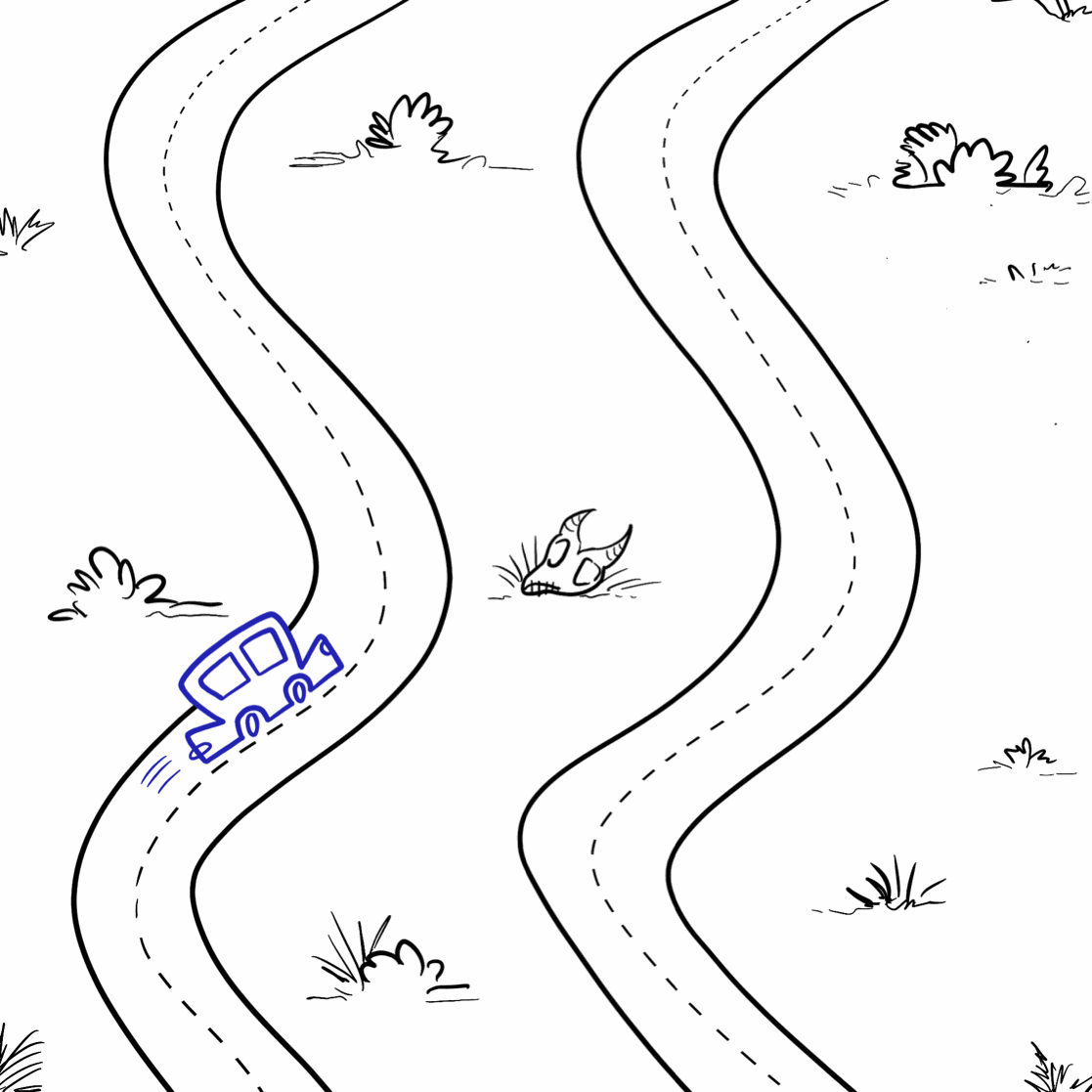
A car traveling down a path that splits. If the car obeyed quantum physics, then it does not go down one path or the other; it partially goes down both paths at once while no one is looking. As soon as someone looks, the car randomly appears on one of the two paths and the version of the car traveling down the opposite path disappears.
Jennah Colborn
Perhaps weirdest of all is that multiple quantum objects can behave in a coordinated way, where the state of one object seems to affect the state of another, no matter where they are in the universe. Imagine having a pair of coins that always land on the same face when you flip them. If one coin lands on heads, the other coin will land on heads, even if they are on opposite sides of the galaxy. It sounds like wizardry, but this is the essence of a real phenomenon called entanglement, one of the most powerful resources of the quantum world. We observe entanglement in how electrons spin, how light propagates, how atoms move, and much more.
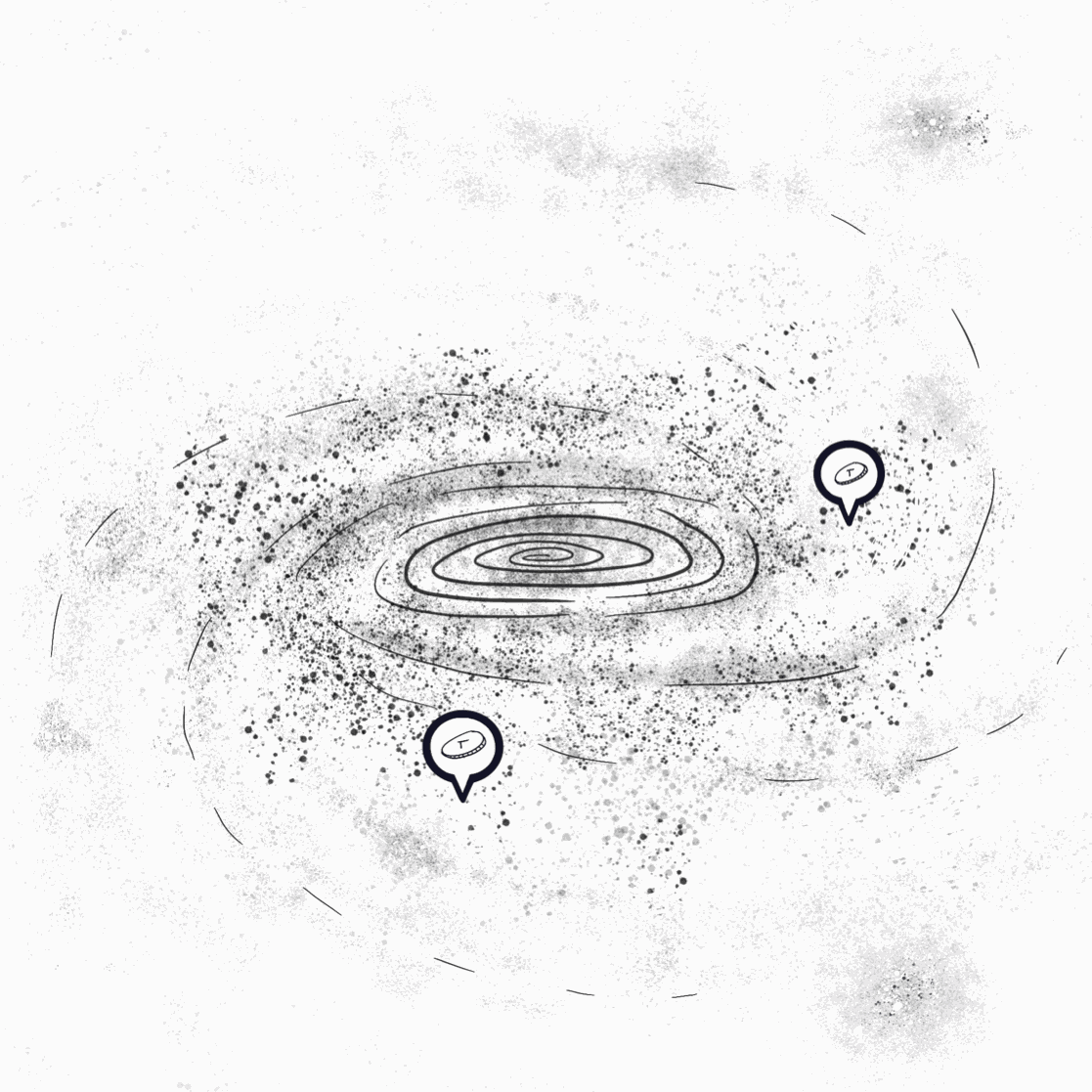
Two coins that were brought to opposite sides of the galaxy. If the coins are entangled, then no matter when or where the coins get flipped, they will land on the same face.
Jennah Colborn
What if we could tap into these strange properties? What could we do with them? This question is the foundation of quantum information, an emerging frontier of science. After a few decades of research, quantum information is poised to have a dramatic impact on science and technology.
To understand how, let’s look at the simple idea that kickstarted today’s information revolution: all of the information in our computers is stored as a string of 1’s and 0’s. The text you just sent? Your recent bank transaction? The color of the pixels on your screen? All have a special code in your computer made of a specific combination of 1’s and 0’s. Each digit of this code is called a bit, and they are the fundamental building blocks of today’s information.
Of course, 1 and 0 are just mathematical abstractions, so these bits are encoded in real life through the voltage in tiny electrical switches. ‘0’ corresponds to the switch being OFF, and ‘1’ corresponds to the switch being ON. Each computer chip contains billions of these switches, flipping on and off in a desired way to store and process information. The essence of solving a problem on a computer is flipping these switches into a final configuration that represents the answer to the problem.
Crucially, the way information behaves depends on the physical object that carries the information. In today’s computers, our information carriers can only do one of two things: turn on and turn off. What if we could store information inside something else, something that behaves fundamentally differently? That’s where quantum information comes in.
Instead of electrical switches, the 1’s and 0’s in quantum information are stored in the quantum states of light and matter. This could be, for example, the energy states of an atom. ‘0’ corresponds to one energy state, and ‘1’ corresponds to a different energy state. Because of this, information behaves in a much richer way than before: information can exist in superposition and be entangled. The bits in quantum information, called qubits, can be 1, 0, or a superposition of 1 and 0 simultaneously.
Add more qubits, and the complexity increases. Two bits can have four states: ‘00’, ‘01’, ‘10’, or ‘11’. A superposition of two qubits allows them to be in all four states simultaneously. A three-qubit superposition has eight states, four have sixteen, and so on. Just 60 qubits in superposition have over one quintillion possible states, more than the world’s biggest supercomputers. A quantum computer made of 60 qubits could store and manipulate all of that information simultaneously.
The caveat is that we can’t access all of that information. Just like the car approaching the fork in the road, as soon as we look at the qubits, the superposition is destroyed and only a single state out of the one quintillion is revealed to us. This is bad for computation: how do we know that the one state revealed to us contains the right answer? It boils down to the mathematics, but scientists have found clever ways to control qubits in some algorithms to get around this problem. The result is that these quantum computers have the potential to solve certain problems that are far beyond the capabilities of conventional computers.
One example is quantum simulation, where we program a computer to replicate the behavior of the atoms, electrons, and nuclei in a chemical or material. Quantum simulation helps us understand how atoms and electrons interact to give chemicals their properties. This could pave the way for developing life-saving drugs, new energy sources, and a better understanding of the universe itself. Today’s computers are surprisingly bad at quantum simulation, because it requires keeping track of all possible quantum states of a complex arrangement of atoms. A typical drug like penicillin has more quantum states than the number of atoms in the universe. We couldn’t simulate its full quantum structure on a conventional computer within our lifetime. Quantum computers are uniquely poised for this task, because qubits obey quantum physics exactly the same way the states of a molecule do. A quantum computer with roughly 100-1000 qubits could simulate molecules like penicillin within a few days. Quantum computers aren’t all-powerful, though. This type of magnificent speedup is only possible for a few problems, but these problems have enormous implications for a wide range of industries.
We can also use qubits to send information more securely through a quantum internet. We’re constantly sharing important information online: credit cards, social security numbers, and more. Ensuring information is secure online is a crucial aspect of the internet. As computers get smarter and faster, it becomes easier for hackers to access your important information without you knowing. In fact, an alarming problem that a large (thousands of qubits) quantum computer would be very good at is breaking RSA encryption - the method that protects most of your information on the internet.
Quantum information is much trickier to hack. It hinges on the idea that looking at a qubit changes its state. Imagine you want to share information stored in qubits. If a hacker tries to read the message, the qubits containing the message will change their state, revealing random gibberish. Scientists have developed quantum encryption protocols based on this idea. It’s a guaranteed way to know if a hacker is tampering with sensitive information. For this reason, a quantum internet has the attention of banks, governments, and schools.
But perhaps the most exciting answer to what quantum information will be useful for is this: no one really knows. 50 years ago, we could never have predicted the enormous impact computers and the internet would have on our daily lives. The explosion of the Information Age came about through decades of experimentation. It’s likely we’ll see the same with quantum information: the most exciting applications may only reveal themselves once the technology starts maturing.
So where are we in this grand vision? We have quantum devices with 50-100 qubits, but we can’t control them accurately enough to really do anything useful with them yet. This is because quantum states are incredibly sensitive to their environment. Remember that looking at a quantum object changes its state, but it’s not just us humans that do the looking. Everything in the environment can “look” at a qubit by interacting with it, from static charge to vibrations in the ground to molecules in the air. Even the tiniest disturbance can alter the state of a qubit, which leads to corrupted information. It’s like trying to balance a pencil on its tip: even the slightest push can topple the pencil. It’s why scientists are building intricate protective machinery to isolate qubits from the outside world. Even then, it’s not enough.
Fortunately, scientists have spent years developing protocols for detecting and correcting these errors. These protocols are known as quantum error correction codes, and they are the reason we believe quantum technology is feasible even in the presence of errors. In a quantum error correction code, the 1’s and 0’s aren’t the qubits themselves, but how the qubits are entangled. Let’s go back to the pair of entangled quantum coins. There are two possible ways they can be entangled. In one way, the coins always land on the same face. In the other way, the coins always land on opposite faces. We can call ‘0’ the state where the coins land the same, and ‘1’ the state where the coins land opposite. The stored information is protected because even if one of the coins is disturbed, the information about how the coins are entangled remains hidden to the environment unless both of the coins are disturbed.
This protection comes at a cost: you need two qubits to encode one ‘protected’ qubit. Practical error correction protocols are more extravagant and require tens, hundreds, even thousands of entangled qubits per protected qubit. This means that quantum technology of any practical use requires control of thousands, even millions of qubits, far off from the number we have today. No need to worry about quantum computers breaking the internet any time soon.
But we’re making progress: over the last 20 years we’ve gone from pen and paper ideas to functional intermediately-sized quantum machines. We’re playing with atoms, light, and ultra-cold electronics in the lab, learning to harness their properties. We’re beginning to demonstrate the first quantum error correction protocol, sending qubits over hundreds of miles, and doing calculations on quantum computers that surpass the capabilities of our traditional computers. That said, large-scale quantum technology with practical relevance to our lives will likely only arrive once we figure out how to implement quantum error correction. How long will that take? No one really knows for sure: it could be 5 years, 5 decades, or more, but the work we do now will pave the way for that long-term vision.


